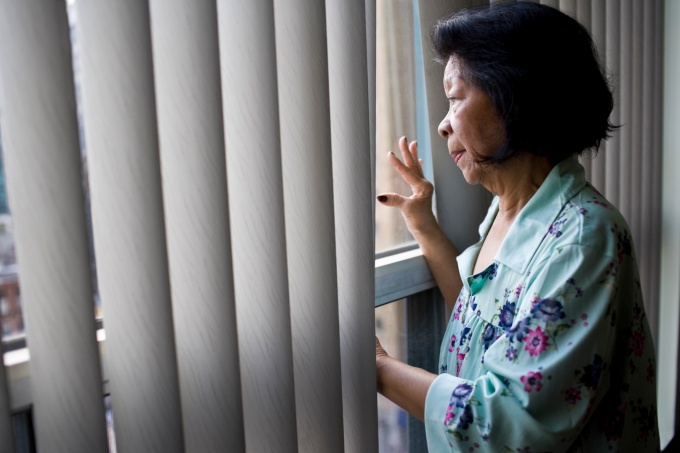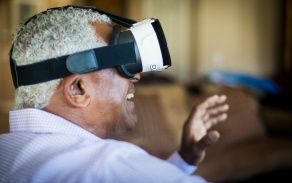Addressing the Many Costs of Social Isolation

by Jana Eisenberg
“Social isolation is a silent killer—as dangerous to health as smoking. National and global health organizations have underscored the hidden, deadly, and pervasive hazards stemming from feeling alone and abandoned. Our challenge is to educate the public on this health hazard, encourage health and human service professionals to address social isolation, and promote effective ways to deepen social connections and community for people of all ages.”
— from the website of the Grand Challenges for Social Work, the flagship program of the American Academy of Social Work & Social Welfare (AASWSW)
In 2015, when the AASWSW added “eradicate social isolation” to its Grand Challenges, the issue was already a rising global concern. And, since part of the remedy for the current pandemic is “staying away from other people,” a.k.a., social distancing, the problem became even more exacerbated and glaring; social workers and gerontological scholars are taking note.
“Loneliness wasn’t even defined as a problem until the 19th century and industrialization. Loneliness—and social isolation—increased during the 20th and 21st centuries,” said UBSSW Dean Nancy J. Smyth. “Connecting has become more challenging. Many older adults are not well-positioned to mitigate their feelings and experiences of isolation. The social work profession is working on how to approach the issue from intervention and practice viewpoints. We—as a society, as social workers, as families, communities and individuals—must find ways to improve it.”
A 2020 National Academies of Sciences, Engineering, and Medicine report found that more than one-third of adults aged 45 and older feel lonely, and nearly one-fourth of adults aged 65 and older are considered socially isolated.
“Many older adults are isolated, living by themselves, and looking for some type of interaction,” concurred Louanne Bakk, a UBSSW clinical associate professor who is also the director of the school’s DSW program. “There are myriad negative and physical health outcomes linked to loneliness and/or social isolation—but few targeted interventions to help older adults who are aging in the community.”
An intervention that was already becoming more popular is technology-based: smartphone and videoconferencing. Via these modes, grandparents—often in lieu of in-person visits even pre-pandemic— get a glimpse of their grandkids, catch up with their grown children, or touch base with friends. And now, it’s ever more pervasive.
The focus on and use of technology has also risen within social work education and practice; UBSSW—partly fueled by faculty interest in the subject, and partly out of necessity—is part of that trend. In fact, virtual reality (VR) is so widely perceived as a key emerging technology that input from mandatory external reviewers of the school’s initial DSW program resulted in the requirement that all our DSW students purchase a VR headset; the primary motive for incorporating it is to help student envision how the technology might be used in the practice environment.
A Study to Connect Through Virtual Reality
“I first learned about and became interested in VR through the DSW program nearly three years ago,” said Bakk. “The experience was so enlightening—it gave a sense of social presence, of being in the same environment with other people.
“There had been only one study that looked at VR in relation to how it might improve older adults’ emotional, social, and physical health and well-being, so we decided to conduct our own study,” Bakk continued. “It is now funded and approved, and we’re partnering with one of our DSW students, Emily Tooley, MSW ‘13, and the agency she works at, Catholic Health’s LIFE (Living Independently for Elders) Program.”
Many older adults are isolated, living by themselves, and looking for some type of interaction.
— Louanne Bakk

Tooley is excited about the study, especially since she observes isolation and its outcomes in clients regularly. “People experiencing social isolation exhibit more adverse health effects—obvious ones, like depression, but more physical and pain complaints, increased falls, or EMS calls,” she said. “Some start to neglect themselves, and even ask to move to a care facility because they are so scared, lonely and alone.”
The study, says Bakk, is an opportunity to see if VR can help to decrease those feelings. “VR doesn’t replace social interaction,” said Bakk. “But our study technology partner, Rendever, is a VR company with the express mission of ‘overcoming social isolation through the power of virtual reality and shared experiences’ for older adults. So we’re eager to work with them.”
Through Rendever and similar companies/technologies, VR is already being used with older adults in senior living communities. It has initially been shown to reduce loneliness and improve mental health—and it does this, Bakk attests, by transporting them virtually, from the comfort of their chair or couch to a variety of settings and environments. She and her study team will work with older people living in their own homes, a new approach for Rendever.
“The experiences you can have are so far-ranging,” said Bakk. “You can ‘take’ a group to a concert or a museum where they can share the experience and talk to each other while they are there. They can visit Egyptian pyramids, or show others in the VR with them their childhood neighborhood! This creates sensations and allows them to share memories.”
Support for Bakk’s study comes in part from Trina Laughlin, MSW ‘98, who in addition to generously responding to the school’s appeal for assistance to purchase equipment, is a practicing social worker who sees her clients directly, negatively impacted by social isolation.
“I now work in Florida with adults, mostly aged 65–90; maybe they’ve lost a spouse, or their friends have passed on or moved away; social opportunities can dwindle vastly. I came to realize that for some, just talking with me during our appointments was enough of a treatment goal,” said Laughlin. "Sharing our stories—maybe you were an artist, or loved to play tennis—is part of what we all need as human beings. It makes us feel vital; a ‘part of.’”
In addition, said Laughlin, older people are a “goldmine”—a motherlode of experience as a “rich, valuable population of human beings.” In past generations and earlier times, more emphasis may have been placed on caring for and connecting with our elders as embedded resources for younger generations—now, not as much.
Looking to the Future
Bakk says that while individual experiences are important to examine, the issue has farther-reaching impacts beyond people’s well-being. Policy needs to be addressed. “The additional medical/health care costs each year associated with loneliness and social isolation are in the billions,” she said.
Tooley, Bakk’s DSW student who will help with the Rendever study, agreed, adding, “One of the things that makes a culture or society pay attention to any issue is the financial cost. The greater need for higher care levels can result in soaring healthcare costs,” said Tooley. “With predictions that over the next 30 years, more and more people in this aging population will need more care and services, it’s important to come up with new technologies.”
From her perspective as outgoing dean, Smyth couldn’t agree more, and it’s an issue she intends to look at more deeply when she returns to her own research. “From better design and more inclusion in things like communities, transportation, and technology, there are situations that practitioners are observing, and solutions that they are testing,” she said. “I will note that ‘loneliness’ is very different than choosing to be alone, which people can do. I would love to see social isolation eliminated as a problem within a decade.”